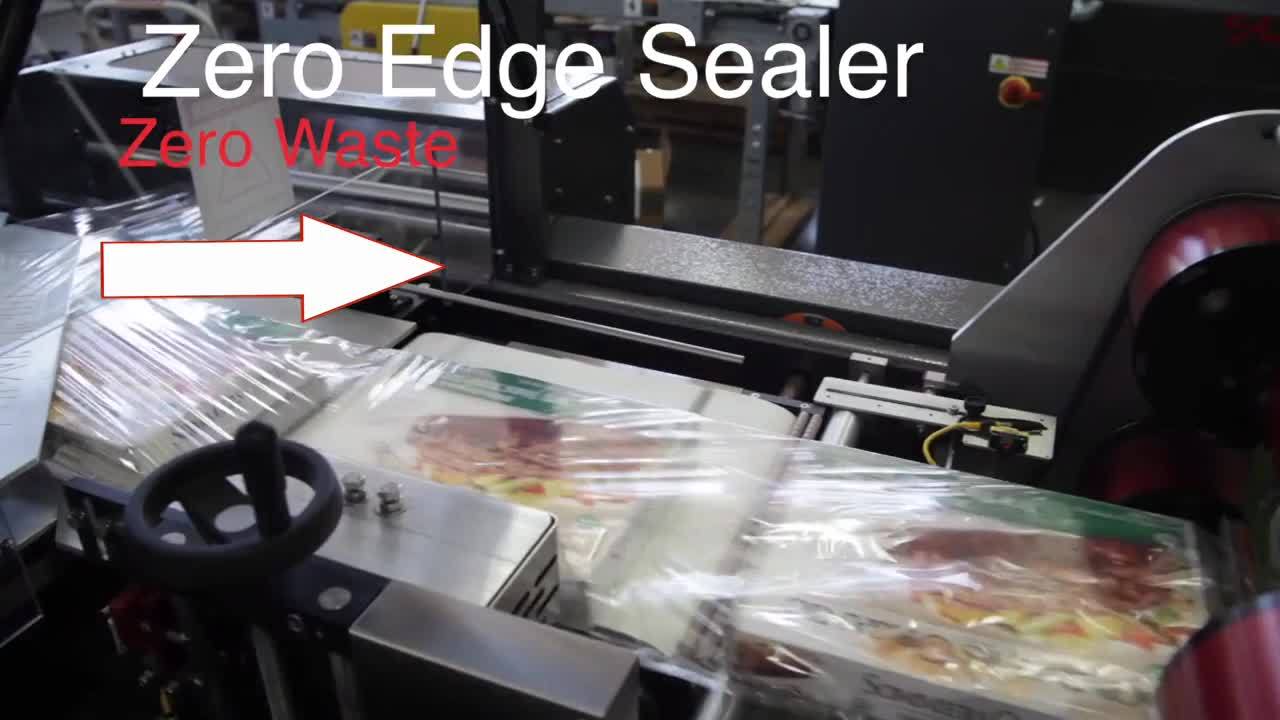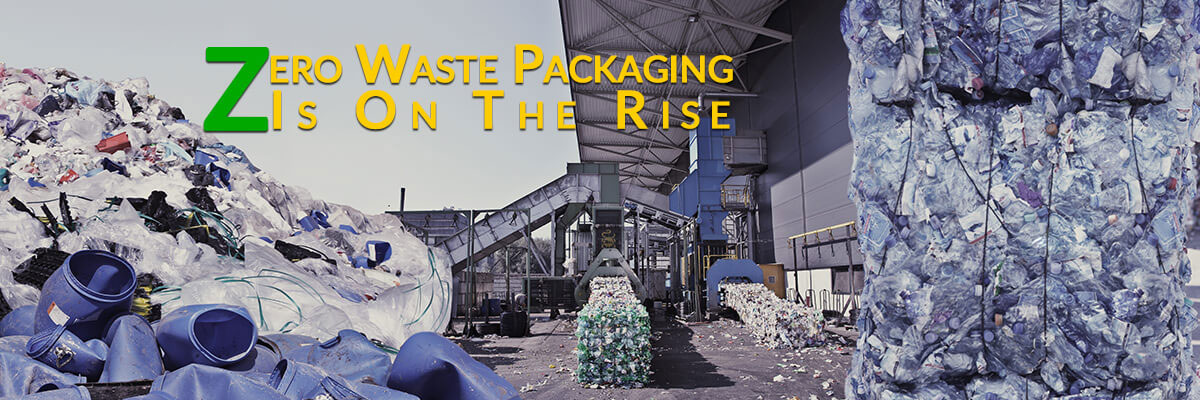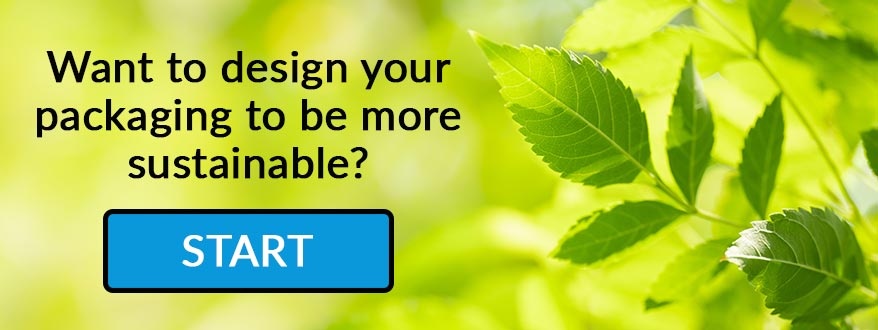Zero Waste Packaging Is on the Rise
Equipment | Packaging Materials | Environment | The Business of Packaging | Plant Performance | Investment | Packaging Design | Packaging Psychology
You may wonder why a packaging company would write an article about "Zero Waste Packaging." I mean, that seems counterintuitive, doesn't it?
I am sure you are thinking something along the lines of, "if zero-waste packaging were to be fully adopted by corporations and the public alike, wouldn't you go out of business?"
While we genuinely appreciate your concern for our well-being, don't worry. While zero-waste packaging could, in theory, pose such a threat, full adoption on a national, let alone a global level, is many years in the future, if at all.
Still, zero-waste packaging is an essential topic for us to discuss, as there are both pros and cons to current zero-waste packaging materials, programs, and associated elements.
In this article, we will explain what zero-waste packaging is, how it works, and many other topics surrounding the idea of zero-waste packaging.
After reading this article, you will have a solid basic understanding of zero-waste packaging and its role in product packaging today and in the future.
What Is Zero Waste Packaging?
Zero waste packaging essentially refers to a system of packaging where all materials are utilized, reused, or recycled, so there’s no waste product.
While any type of packaging will involve some leftover components, there are innovative ways to make the packaging process a zero-waste endeavor.
Looking for sustainable packaging? We can help!
According to the Zero Waste International Alliance: "Zero Waste means designing and managing products and processes to systematically avoid and eliminate the volume and toxicity of Waste and materials, conserve and recover all resources, and not burn or bury them. Implementing Zero Waste will eliminate all discharges to land, water or air threatening planetary, human, animal or plant health."
Innovators are trying different things to achieve zero Waste, from creating packaging that serves its own separate purpose (such as "plantable packaging") to designing edible containers or nontoxic "films" that can protect items without any excess material.
Why Is Zero Waste Packaging on the Horizon?
As the global population grows, so does the waste we all contribute to producing.
There are somewhere around 6.9 billion tons of plastic waste on the planet. Conscious companies, leaders, and consumers don't want to see that number continue to grow — so there's much discussion of alternative options that are more sustainable.
And it’s not just plastic. Landfills continue to swell in size with all kinds of materials; even items that are biodegradable can take decades or longer to break down.
The bottom line is that the more sustainable and zero-waste options, the better for everyone who shares the planet. Utilizing most of your packaging of any sort without creating waste in the production process is hugely beneficial to the zero-waste cause.
Recycling Isn’t a Catch-All Solution
While using recycled products (and recyclable materials) is excellent, it isn't a foolproof solution. It can't address all of the waste that's created.
Research has found that despite widespread adoption by consumers, recycling has not been entirely successful. This is mainly due to confusion and, consequently, contaminated recycling streams that aren't efficient or effective.
In the U.S., most recycling is "single stream," meaning there's one paper, plastic, metal, and glass bin.
Unfortunately, this has led to large-scale confusion among consumers, who aren’t sure what is recyclable and what isn’t.
Recycling codes are different in different locations, and some products are made with a combination of materials, making it even more complicated.
And when recycling streams become contaminated with the wrong items, much of the material ends up in landfills.
All of this means that it’s more important than ever to find alternatives to recycling.
Zero Waste Packaging Can Save You Money — When Done Properly
Zero-waste packaging can be a challenge. It requires rethinking what materials are used. It often involves a full-circle process, where your materials are returned to you for reuse or repurposing.
Essentially, zero waste is about companies taking control of the waste their operations create, which means setting up a system for what happens to the waste/containment after it's in the hands of consumers or buyers — not necessarily an easy task.
But despite the obstacles, zero waste is an excellent goal for conscious companies looking to impact the world positively. It can also save money — when done the right way.
It can also help your business build brand loyalty with consumers who are looking for greener options.
Zero Waste in Action: How Does It Work?
While zero waste differs from industry to industry, the overall goal is to eliminate waste and transform or reuse all materials.
When done correctly, zero waste can lead to cost savings. If your company creates a closed loop where packaging materials are being reused — or transformed into another revenue source — it saves on the initial cost of creating an endless amount of single-use containers.
Consider this example: your product is packaged in a sturdy, reusable container. When a consumer is finished with the product, they return the package via a local drop-off point or through a shipping service. Then, your company cleans and prepares the container to be refilled.
That's the idea behind Loop, a zero-waste packaging network created by a group of large consumer brands that are slated to launch later this year.
Here’s how it will work:
Initially, products will be available through Loop's e-commerce site, and consumers will pay a deposit for the bottle that their product contains. Products could be as diverse as ice cream, deodorant, toothpaste, etc.
The products will be delivered in a reusable tote. As the items are used up, the consumer will put the containers back into the tote and set them aside.
When the tote is full, they can request that a driver pick it up or drop it off at the UPS store. The used packaging will then be cleaned, sterilized, and refilled. Each container is designed for 100 or more uses.
This is a large-scale example of brands working together, but it explains how zero waste can be made possible.
Here are a few ways your organization could start to move towards zero-waste packaging:
- Opt for reusable pallets/pallet containment
- Consider using compostable materials.
- Offer consumers incentives for returning or reusing their packaging materials.
- Think of ways your packaging could be upcycled or turned into another revenue stream.
- Minimize the amount of packaging you utilize per package by reducing film widths, thus reducing film waste.
- Invest in packaging machinery that is geared towards zero waste, like the zero-edge sealer from one of our partners, Extreme packaging.

What Are the Issues With Zero Waste Packaging?
As we've established, aiming for zero-waste packaging isn't necessarily an easy process — mainly depending on what your product is.
Some of the critical issues with zero-waste packaging include the following:
- Labeling. As mentioned before, recycling labels tend to confuse consumers, as they aren't clear about which items are acceptable and which aren't. With a zero-waste model, it can be challenging to instruct the consumer on what to do with their packaging (if it needs to be returned to you, dropped off at a store, etc.)
- Consumer behavior. Ease of use for consumers is essential for making zero-waste packaging a reality. Consumers may not comply with the instructions if the process is too time-consuming or confusing. They may not have time to drop their packaging off somewhere or could simply forget.
The Future of Zero Waste Packaging
The widespread adoption of zero-waste packaging is still far in the future. But knowing about this trend — and how it could potentially benefit your company and clients — is vital as the industry moves towards more sustainable options.
In the meantime, consider a packaging audit if you're looking to reduce the use of packaging materials or move towards more sustainable and efficient materials and processes. It can help you assess where you stand — and what your company's future could look like.
Additionally, you can learn more about sustainable flexible packaging materials below including what sustainable packaging is and pricing for these materials.
If you are looking to have specific questions answered that you do not find at the link below, you may want to speak with one of our packaging experts.
They will be able to help answer any questions you have about sustainable packaging, what it is, how it works, and where you can source these materials.
About David Roberge
I am grateful to be part of the outstanding Industrial Packaging team. I am able to hang out with some of the most knowledgeable folks in the packaging industry. I feel even luckier that I am able to share that knowledge with you. I love learning, hiking, and growing people and teams both personally and professionally, and helping companies grow better.




